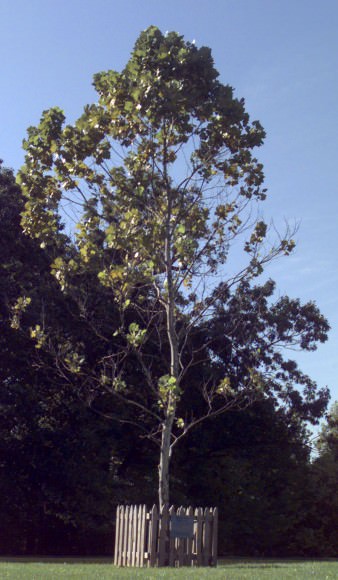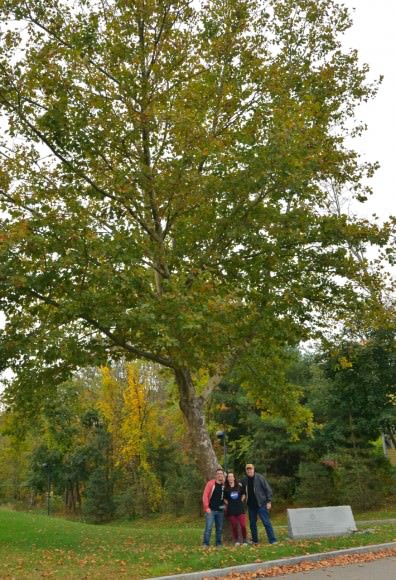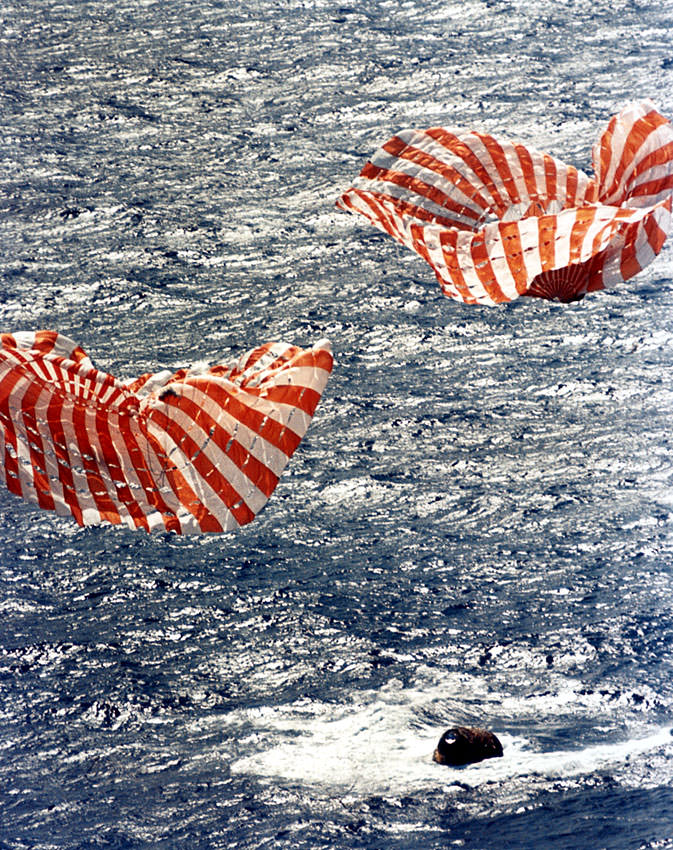On this day in 1971 Apollo 14 astronauts Alan Shepard, Jr., Stuart Roosa and Edgar Mitchell returned to Earth, splashing down in the Pacific Ocean at 21:05 UT (4:05 p.m. EST). They were recovered by the USS New Orleans, and returned to the U.S. by way of American Samoa. But the three men weren’t the only living creatures to come back from the Moon on Feb. 9, 1971… in fact, human astronauts were in the minority that day.
Al, Stu and Ed shared their lunar voyage with nearly 500 trees.
As Shepard and Mitchell gathered samples near their landing site in a region named Fra Mauro, Apollo 14 pilot and ex-smoke jumper Stuart Roosa orbited above in “Kitty Hawk”, the mission’s Command Module. It may sound like a lonely job, but he was far from alone. Within his personal kit were small containers containing 400-500 seeds, part of a joint NASA/USFS project to examine the effects, if any, of space travel on such organisms.
The seeds were selected from a variety of tree species: redwood, loblolly pine, sycamore, Douglas fir, and sweetgum seeds were all chosen to accompany Roosa on his 34 orbits around the Moon.
A control group of the same seed varieties were kept on Earth for comparison.
Stuart Roosa had worked for the Forest Service in the 1950s before becoming an Air Force test pilot and then eventually an Apollo astronaut. Being charged with the care of the seeds was a particularly symbolic assignment for Roosa, who had once fought wildfires as a smoke jumper.
Even though there was a mishap during the decontamination process after return to Earth, wherein some containers burst open and seeds were inadvertently mixed together, many of the seeds successfully germinated at Forest Service stations in Mississippi and California. The seedlings were eventually sent to locations around the country and around the world to commemorate the success of the Apollo program.
There was even a second generation, called half-moon trees.

Many of these “Moon Trees” and their descendants still stand today. In some instances they are marked with a plaque or a sign… in others, no special marking denotes their significance. Those unmarked trees stand as silent reminders of an earlier and perhaps even bolder era of human space flight.

Read more about the Moon Trees on this page by David Williams of NASA’s Goddard Space Flight Center. And if you know of a Moon Tree that is not on Mr. William’s list, please contact him to have it included. Williams has endeavored to locate the whereabouts and status of these trees since 1996, as there had been no systematic records previously kept of them.
“I think when people are aware of the heritage of the trees, they usually take steps to preserve them,” said Williams in recollection of one tree that was nearly knocked down during a building renovation. “But sometimes people aren’t aware. That’s why we want to locate as many as we can soon. We want to have a record that these trees are — or were — a part of these communities, before they’re gone.”

